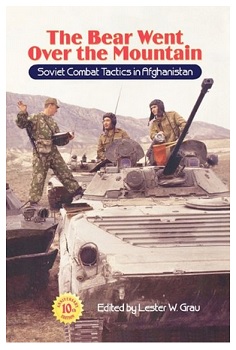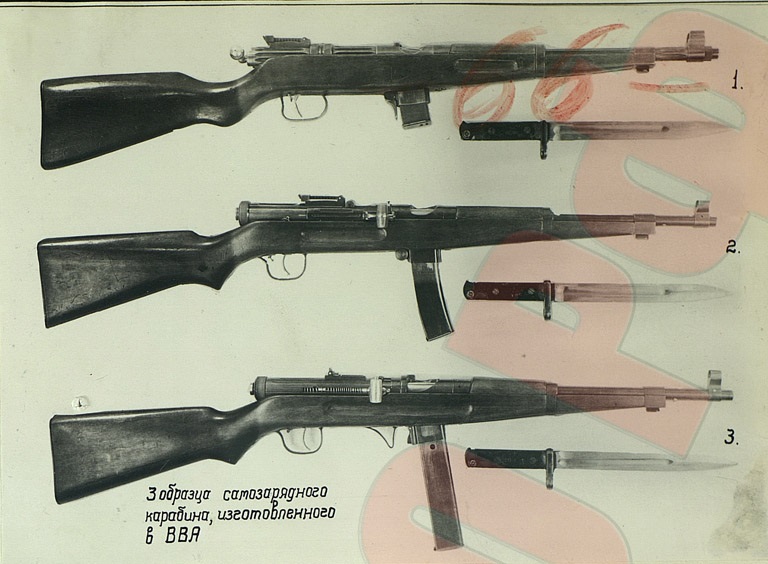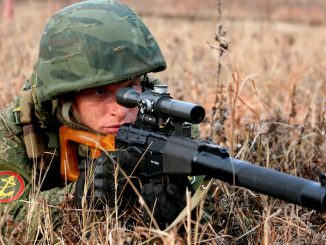 I’ve been aware of Lester Grau’s The Bear Went Over the Mountain: Soviet Combat Tactics in Afghanistan
I’ve been aware of Lester Grau’s The Bear Went Over the Mountain: Soviet Combat Tactics in Afghanistan for a long time – I borrowed a copy many years ago – but only recently purchased a copy for myself. Not surprisingly, it was reprinted in 2010 and again in 2013, making it much more readily available than when I first heard of it. That’s great news!
Bear Went Over the Mountain is really not a single book; it is a compilation of forty-odd short vignettes of Soviet combat actions from their invasion and occupation of Afghanistan. The accounts were taken and translated from a volume printed by the Frunze Combined Arms Academy in Moscow. They were originally compiled for the use of Soviet military students and not for general publication – and so they make light of both the successes and mistakes of the commanders involved, to which the author (an infantry officer, Vietnam vet, and Soviet analyst for the Foreign Military Studies Office) has added his own commentary. Ironically, the book was nearly not published in 1996, when the National Defense University pulled its funding just prior to publication on the grounds that the US would never again be fighting a counter-insurgency.
Reviews for Bear are mixed, because of different expectations people have of the content. This is not at all an analysis of general Soviet strategy or the big-picture way they waged war in Afghanistan. In many ways, it’s not even an organized analysis of small-unit doctrine or tactics. Instead, it is a series of after-action reports on skirmishes with combatants numbering form the dozens to a few hundred in total. Each one includes a map of the action drawn by the commander on the ground, and 1-3 pages of description, followed by brief commentaries by the Frunze Academy editors and Grau. These accounts address how individual Soviet unit commanders planned and organized actions, and how they then acted in combat. Grau has divided the vignettes into six sections:
- Blocking and Destroying Guerrilla Forces
- Offensive in Populated Areas and Mountains
- Application of Tactical Air Assaults
- Defense and Outpost Security
- March and Convoy Escort
- Conducting Ambushes
Here is a typical example:
[nggallery id=221]
These vignettes, I think, are a fascinating look into the Soviet war in Afghanistan – and I expect they would hold useful insights for soldiers deployed there today (I would be very interested to hear thoughts from anyone who has read the book and served in-country). I find that it is best to pick a single action or two and study the description and map until I have a thorough understanding of what happened, rather than try to read the volume cover to cover.
I should point out that Grau’s translation of the text from Russian is outstanding – he includes plenty of footnotes explaining Soviet doctrinal concepts when necessary (like the bronegruppa, a group of armored vehicles deployed independently of infantry as a mobile reserve or concentration of direct firepower), and the text reads like it was written originally in English.
I think Grau’s work was an indispensable part of a library on guerrilla warfare back in the 90s when it was originally published. It is all the more significant today in light of the US’ many years of combat in Afghanistan if for no other reason than to contrast the US and Soviet methods and results, and to contrast today’s fighters to the mujahideen on the 1980s. Thanks to the multiple reprintings, you can get it today in either paperback or for the Kindle, and used copies can be had for just a few bucks:
Updated to add: As Kevin points out in the comments, the DOD has released the book online, and you can find PDF copies on the net without any trouble. For folks who are happy with electronic rather than print, here is a copy you can download.




I hate to undermine your sales, but the DOD widely distributed both this and The Other Side of the Mountain which is the muj view of the war about ten years ago, by Ahmed Jalali and Grau, as .pdfs… they’re all over the net!
I suspect you can pull them off DTIC. They were on DTIC at one time. But there’s a lot to be said for having a printed copy. (I went to Afghanistan with a paper copy made by printing off the .pdf).
The Other Side is a bit uneven as it depends on the muj Jalali and Grau were able to interview, and they were unable to connect with Haq, Massoud, Jalaluddin Haqqani and Ismail Khan (some pretty big guys, all of whom were also involved somehow in the 2001- war, Massoud and Haq being KIA in 2001, Haqqani flipping to the opposition circa 2003-04, and Ismail Khan continuously on our side). All the guys they couldn’t talk to (remember the Russian war was still going on during these interviews!) promised them an interview “later,” but as you noted budget cuts intervened and I don’t think the follow-on interviews ever happened.
If there is a bias in the book it is too heavy on NIFA operations, but of the 7 groups NIFA (royalists, based out of Kandahar), Younis Khalis’s Hezb-i Islami, Haqqani and Massoud (Panjshiri Tajik) did most of the actual effective fighting. All of them from time to time cut deals with the communists — it’s the Afghan way. (“An Afghan’s honor is not for sale… for rent, maybe” — old Afghan saying).
What we had before going to Afg at the start of the war was these two .pdfs, some generic references (like the American University Area Study book), the many books published in the 80s, our own experience and study (I’d done my O&I area study on Afghanistan in 1988-89), and some debriefings and documents from a former head of ISI. Who later flipped to the enemy himself.
It’s not like any place in the world. The Afghans are the best and worst people I have ever encountered! Like family, you have to take both ends of the pendulum swing.
A more general work on the history of insurgency/counterinsurgency is Robert B Aspery’s two volume “War in the Shadows – The Guerilla in History”. Printed first in 1975, it covers guerilla wars up to Vietnam and offers considerable insight into the strategy, tactics, and prosecution of small wars.
Honorable mention should go to Victor David Hanson’s “A War Like No Other: How the Athenians and Spartans Fought the Peloponnesian War”. The story of the first well documented guerilla war.
I second John on Asprey. My old copies (Military Book Club edition) are dog-eared and well-worn. It’s dated now because of its vintage, but the themes of history are never new.
Max Boot has a new book ouy on the subject, Invisible Armies. Have it but haven’t read it yet.
My two-volume set of Asprey isn’t quite falling apart, but it certainly shows that it hasn’t just sat on the shelf gathering dust.
If you can find it, I’d also recommend Age of the Guerrilla(1970) by Francois Sully. As a journalist he covered several “brushfire” wars in the Fifties and Sixties, and did a good job of detailing the differences in both tactics and motivations of guerrillas in various conflicts. Among other things, he wrote about the various “internal” conflicts in Islamic countries at a time when most people in the West were unaware that there even were any.
Thanks for the PDF, Ian & Co. I know what my leisure-time reading for the next few days will be. 🙂
cheers
eon
Oh, I forgot to mention: of the several hundreds of books and probably thousands of papers, manuscripts, briefings, etc., the thing that was most useful was a careful reading of Kipling’s stories of the Northwest Frontier.
Culturally, the only change since the Raj had been that Afghan marksmanship declined terribly. (Mind you, I’m not complaining about that). I understand from friends who have been recently that around 2005 it started improving rapidly and the sort of wandering-around we did in 2002 would not be advisable today.
Read both of those books when first made available many years ago, prior to our involvment in Afghanistan. Tried to get my students interested in the lessons learned but they were still to interested in fighting tanks in europe to incorporate the lessons learned by others. Their interest picked up immeasurably a couple of years later.
I enjoyed reading both books it provided and interesting look into the mindset of both groups of antagonists at the time. I would be interested if there was a similar work available about the Cubans adventures in Angola.
I recall a TV series from early 90s which hosted a young Russian officer who (as I recall) switched sides and later went into U.S. I cannot tell the name after so many years but it was well into details such as how Soviet POW were disposed of. Tactics on both sides were discussed and events documented; realism abound.
Denny – “Charlie Wilson’s War” (the book, not the movie) went into quite a bit of detail regarding the treatment of captured Russians in Afghanistan. Basically, prisoners were gang-raped before being slowly executed. Some knuckleheaded US congresscritter in Wilson’s camp came up with the bright idea of obtaining captured Russians from the muj and training them to go back into combat against the Soviets. Sort of like the Nazis’ St. George Brigade utilizing captured Brits against the allies; in that case, the handful of POWs willing to switch sides were the dregs of the Royal Army and useless as fighters. A handful of Soviets actually made it to the US but they had been sodomized into drooling idiocy and were pretty much useless for anything, let alone being sent back into combat. From everything I’ve read about The Land The Geneva Convention Forgot hasn’t changed much since Kipling advised soldiers about to be captured to commit suicide and “go to your God as a soldier.”
Hard to tell Jim what is fiction and what actually happened – authors want to sell too. It was probably mixture of all above.
The serial I recall was actually on TV screen and there were episodes accompanied by this (presumably) young Russian who made it whole circle. He spoke of tactics, for example how they used RPGs to down helicopters. When comes to treatment of Captured Soviet soldiers, they were treated according to him humanly – asked to remove trousers and then shot. No torture, “no knives, nothing fancy” (his words) according to what I recall.
I met (in Canada) a Russian who was in active service that time as APC commander. He told me how lucky he was when his unit was about to be put on the road he became sick. He survived without even having seen real thing; lucky bas-ard. He told me all kind of things about Russian military and history. First hand account, which I like the most.
While we’re on the subject of the Soviet Debacle in Afghanistan, there are few other tomes worth looking at. In addition to the Bear went Over the Mountain, Grau also edited another piece originally penned by the Russian General Staff, released as The Soviet-Afghan War: How a Superpower Fought and Lost. While Bear went Over the Mountain deals mostly with tactical vignettes, Soviet-Afghan War is a top-level examination of the conflict with sections on equipment, overall tactics and organization; it’s a great companion piece to Bear went Over the Mountain.
There’s also the more recent book The Great Gamble by Gregory Feifer. It’s a whole lot less technical than Grau, but it offers a good overview of the war from the Soviet point of view, and there’s a fair amount of space given over to the experience of various frontline soldiers.
Hard to tell if “superpower fought and lost”. I rather call it “tactical withdrawal” based on realistic considerations. In greater scope of history we shall see what comes out of last adventure to subjugate Afgans.
http://www.scribd.com/doc/176834450/The-Bear-Went-Over-the-Mountain
An exceptionally good book I would strongly recommend is “Red Army” ( Simon & Schuster, 1989 ) by Ralph Peters. The author wrote this novel primarily as a fictional but hard-edged, thoroughly realistic extrapolation on the consequences of a conventional war between the Warsaw Pact and NATO at the height of the Cold War, as seen entirely from the Russian standpoint and from a humanistic viewpoint at ground level. The book also has significant side references to the Soviet campaign in Afghanistan, and the merciless, no-holds-barred approach adopted by both sides.
Peters wrote “Red Army” on the basis of very hard, and often ugly and unpalatable truths. This alone distinguishes it in a highly significant way from the often-hailed works of General Sir John Hackett, Tom Clancy and the like. While the latter have written their stories based on fact with conclusions of their own making, Peters wrote his without due consideration for political, military or other sensitivities. His conclusion was that NATO, and the United States, would lose the war in Western Europe, and in a very bad way, given the circumstances of the time period in question.
Before anyone is inclined to dismiss “Red Army” as being an alarm bell that was being sounded for the sake of journalistic sensationalism or political and military expediency, one should remember that Ralph Peters was a senior U.S. Army intelligence officer with a great deal of tactical experience with various NATO armies, and a real appreciation for what it meant to soldiers on both sides at ground level. He was a high-level Soviet analyst and linguist, and was not only able to understand the Russian language and all its cultural nuances, but to THINK in Russian and act accordingly, which is as close to being a Russian as one could possibly get. Combined with his extensive and detailed technical knowledge of the Soviet Union and the Warsaw Pact, this made for what I would consider the most factually accurate conclusions regarding a conflict between the Warsaw Pact and NATO, even though it is a work of fiction. The side bars concerning the Russian experience in Afghanistan are no different.